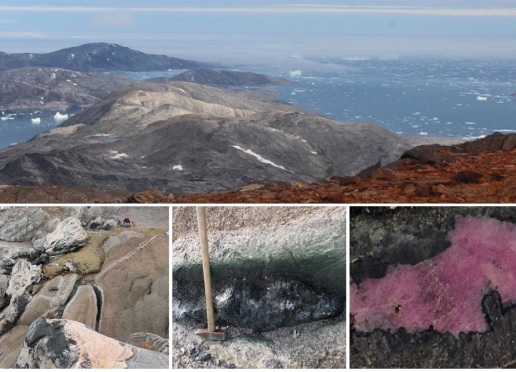Universitetsavisen
Nørregade 10
1165 København K
Tlf: 21 17 95 65 (man-fre kl. 9-15)
E-mail: uni-avis@adm.ku.dk
PhD thesis defense
PhD thesis defense — 19 MAY at 15:00
Date & Time:
Place:
Aud. C, Department of Geosciences and Natural Resource Management, Øster Voldgade 10, 1350 Copenhagen K
Hosted by:
Geology Section
Cost:
Free
Majken Djurhuus Poulsen defends her thesis,
Controls on element exchange during plumasite-type corundum formation in ultramafic rocks
Supervisors:
Professor Robert Frei, IGN
Senior researcher Nynke Keulen, GEUS
Associate Professor Vincent J. van Hinsberg, Mcgill University – Canada
Professor Jochen Kolb, Karlsruher Institut für Technologie – Germany
Assessment committee:
Professor John C. Schumacher, Portland State University – US
Associate Professor Thomas Ulrich, Aarhus University
Professor Tod Waight (chair), IGN
Summary:
Plumasite-type corundum in ultramafic rocks from the Nattivit area (Isertoq Terrane), in SouthEast Greenland formed during convergence and continent collision. The continental crust in Isertoq Terrane, consist of 3.0-2.9 Ga (εNd TDM model) mafic to ultramafic rock and TTG sheets with intrusion ages of U/Pb zircon 2841±11 to 2651±7 Ma. The geochemical data for the mafic to ultramafic rocks in Isertoq Terrane indicate a continental arc tectonic setting. Peak metamorphism in Isertoq Terrane occurred at 1891±9 to 1871±9 Ma at 700-740°C and 7-9 kbar.
Pegmatite intrusion occurred in three episodes between 1855±16 and 1735±27 Ma. The pegmatite triggered corundum formation at 1843±4Ma (U/Pb zircon age) at the contact with ultramafic rocks, at 680-700° and 7-9 kbar, during the collisional phase. The pegmatites are peraluminous, calc-alkaline and have a granitic to granodioritic composition. The Rb-Sr, SmNd, Pb and oxygen isotopes indicate the pegmatite are derived from partial melts from mafic granulite or subducted plate. A typical setting for plumasite-type corundum appears to be in the upper plate of a convergent geotectonic setting. The desilication of the pegmatite and metasomatism of lherzolite causes an increase in Ca, Mg, K, Mn, Al and Fe towards the centre of the metasomatic reaction zone, where there additionally is observed an increase in Cr, Ni, Mg, Fe, Sc, Co, V, Zn, Ti, and Mn, derived from the lherzolite. The thermodynamic fluid composition modelling with the Perple_X suite of programs for a metasomatic reaction zone in lherzolite, show that the pegmatite fluid have pH of 0.7 units above neutral and thus is alkaline.
The pegmatite had a maximum X(CO2) of 0.1, and raised the oxygen fugacity level in the lherzolite from NNO-3 to NNO-2. The fluid in equilibrium with the metasomatic mineral assemblage contains Fe and Al as major cations, additionally components of K, Si and Ca were also present, and Na, Mg and Cr as minor ligands. The pegmatite fluid was F-rich, where the fluid F and Cl content is estimated to 121-161 ppm from F contents in apatite and biotite, and Cl is between 0.5 and 5 mass%. (Hydr)oxide and carbonate species dominate the fluid, and cation concentrations are not sensitive to the Cl-content of the fluid. The combination of reduced and alkaline conditions results in high Al mobility, and this is enhanced by the elevated F-content in the fluid. Saturation in corundum in the lherzolite is proposed to be a result of a combination of active Al addition from the lherzolite and residual enrichment of Al from the pegmatite, and the Fe-enrichment in the corundum a result of high Fe and low Cr mobility in the metasomatic fluid.
A digital version of the PhD thesis can be obtained from the PhD secretary Mikala Heckscher at mikala@ign.ku.dk
